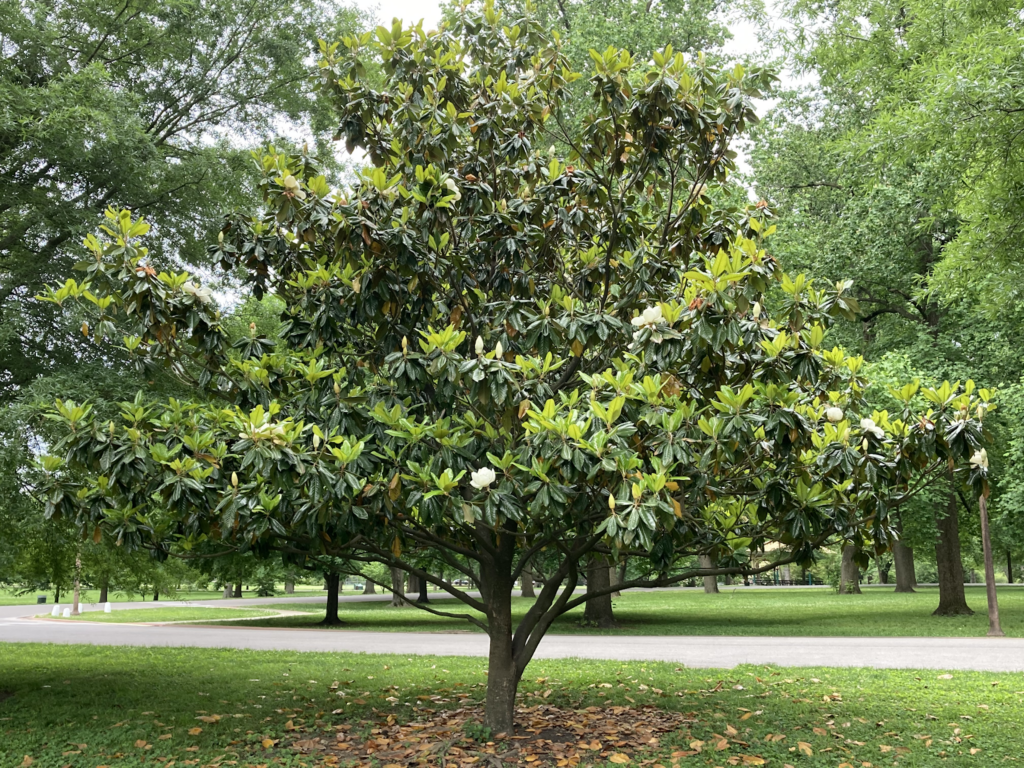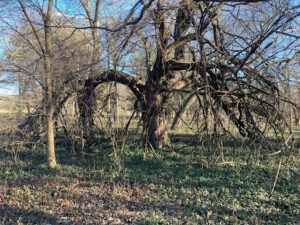By: Mark Halpin, Forestry Manager
The southern magnolia, Magnolia grandiflora, holds a special place in the hearts of southerners. A resident of Louisiana once told me that when his grandfather’s home was destroyed in hurricane Katrina, what really upset the man was that his magnolia tree did not survive the destruction (his home, he reasoned, could be rebuilt in months, whereas such a tree was decades in the making; truly a wise assessment). Between its noble form and size (nearly 100 feet in the south, 40 being exceptional in St. Louis), its huge, mirror-glossy leaves and large, beautiful and intensely fragrant flowers this species offers an embarrassment of riches in its ornamental attributes. It is no wonder that the Deep South has elected this magnolia as its botanical representative and that it is planted so widely.
Here in St. Louis, we are just south enough, and just warm enough that we can grow M. grandiflora. We are also just north enough, and just cold enough that in doing so we are rolling the dice. (Some sources even suggest the Bootheel as the northern end of its range for Missouri). Broadleaved evergreens are a risky proposition anywhere the ground freezes (as faithful readers may recall from our discussion of American holly); groundwater becomes unavailable in the winter and cold, desiccating winds strip moisture from the leaves, causing winter scorch and defoliation. This is compounded by the enormous size of the southern magnolia’s leaves, as each one represents a more significant investment of the tree’s energy. ‘Bracken’s Brown Beauty’ has proven to be a reliably cold-hardy cultivar and is typically what you’ll see planted here; the underside of the leaf is covered in rusty brown tomentum (“fuzzy hair” in English) that helps to insulate against water loss.
As with the evergreen hollies, keeping the cold winter winds off of the tree is paramount to success, and so a protected location is advised. It’s a relatively thirsty tree, but needs good drainage, so a low spot rich with our native clay soil is a bad idea. Treating it as an understory tree is the safest bet; the shade will not only lessen winter burn but help keep the soil moist. Native plant purists will say this is all just an indication that the plant shouldn’t be here in the first place, but with careful site selection a southern magnolia really can thrive in St. Louis with little assistance and can give back to the landscape much more than it takes. Native plants should absolutely be prioritized, but a southern magnolia in full bloom is a true summer treat, like eating an ice cream cone with three scoops piled onto it. We shouldn’t deny ourselves those rare indulgences, so long as we balance them out with more sensible choices most of the time.




